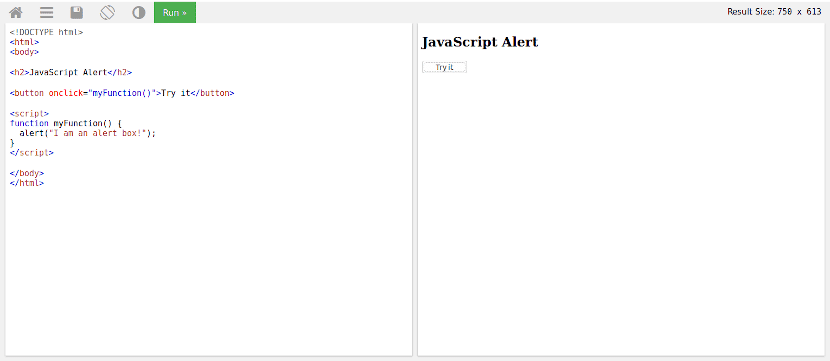
JavaScript code to generate an alert window.
Actually, I had titled this post as "open source alternatives for front-end programming." But, as a reader once put it, it's hardly suitable. Open source languages are the first choice of most user interface professionals. In this case the alternatives are the exclusive ones.
Of course it was not an easy path. We had to get rid of Internet Explorer 6 and Adobe Flash. But, at least for now, we know that there is a sector in which we do not depend on the whims of a company
What is front-end programming?
In the beginning, websites consisted of static text and images. As the speed of connections increased, designers began to add multimedia content and animations. Users began to interact more actively with the pages instead of just reading.
For years, the de facto option for making sites interactive was ActionScript. A proprietary programming language that sIt was used to create content for Flash. Flash is a technology developed by Macromedia (now owned by Adobe). With Flash, you could play videos, create drop-down menus, animated buttons, pop-ups, and much more.
The problem with Flash was that It was consuming a lot of system resources and slowing the loading of the pages. On the other hand, web developers used it even when it was not necessary. Flash too I had multiple security problems that still appear today.
Flash began his farewell when Steve Jobs, tired of the performance problems in his products, decided to boycott it and bet on Html5, Css3 and Javascript. Microsoft, which had failed with its own alternative, also joined. For our part, Linux users, ignored by Adobe for years, also did our bit.
Thanks to the availability of open source tools, and due to the need for a website to adapt to multiple devices, andWebsite design became specialized. Front-end s programminge refers to the part of the website in charge of interaction with the user. Basically the interface of the site and the tasks that it develops on the device from which the web is accessed.
Open source languages for front-end programming
Let's review then, some of the alternatives that we have:
JavaScript
Perhaps the most used and undoubtedly the oldest of those that appear in our list. It was created to increase the functionality of the Netscape browser. It has multiple libraries that increase its functionality and reduce programming time. In addition, because it is so widely used, supported by all browsers and documentation is abundant. If you are thinking of dedicating yourself to web design as a job opportunity, it is undoubtedly a good place to start.
Dart
Dart is an alternative to Javascript developed by Google. It is intended to correct the complaints that programmers have towards that language. Programs created in Dart can be compiled into Javascript for use on websites. On the other hand, if you combine it with Google's Flutter UI toolkit it can be used to create native apps for desktop, mobile. If you are familiar with C ++ or Java, this language will be more familiar to you.
TypeScript
In this case we are not talking about a different language but about a corrected version of Javascript created by Microsoft. TypeScript adds several new features that improve and modernize JavaScript limitations. My recommendation is that you learn JavaScript and its limitations first and then move on to TypeScript.
ClojureScript
clown is a variant of the LIsp language that is used for general purposes. It has the great advantage that pCan be used for both back-end programming(run in a Java virtual machine) as front-end (compiled as Javascript code). If you want to dedicate yourself to all aspects of web design, it may be a good option.
At the moment, JavaScript or one of the languages that facilitate the creation of JavasCript code seems to be the best option to get into front-end programming. However, the decision of which language to learn will depend on your needs, your time and your previous knowledge.